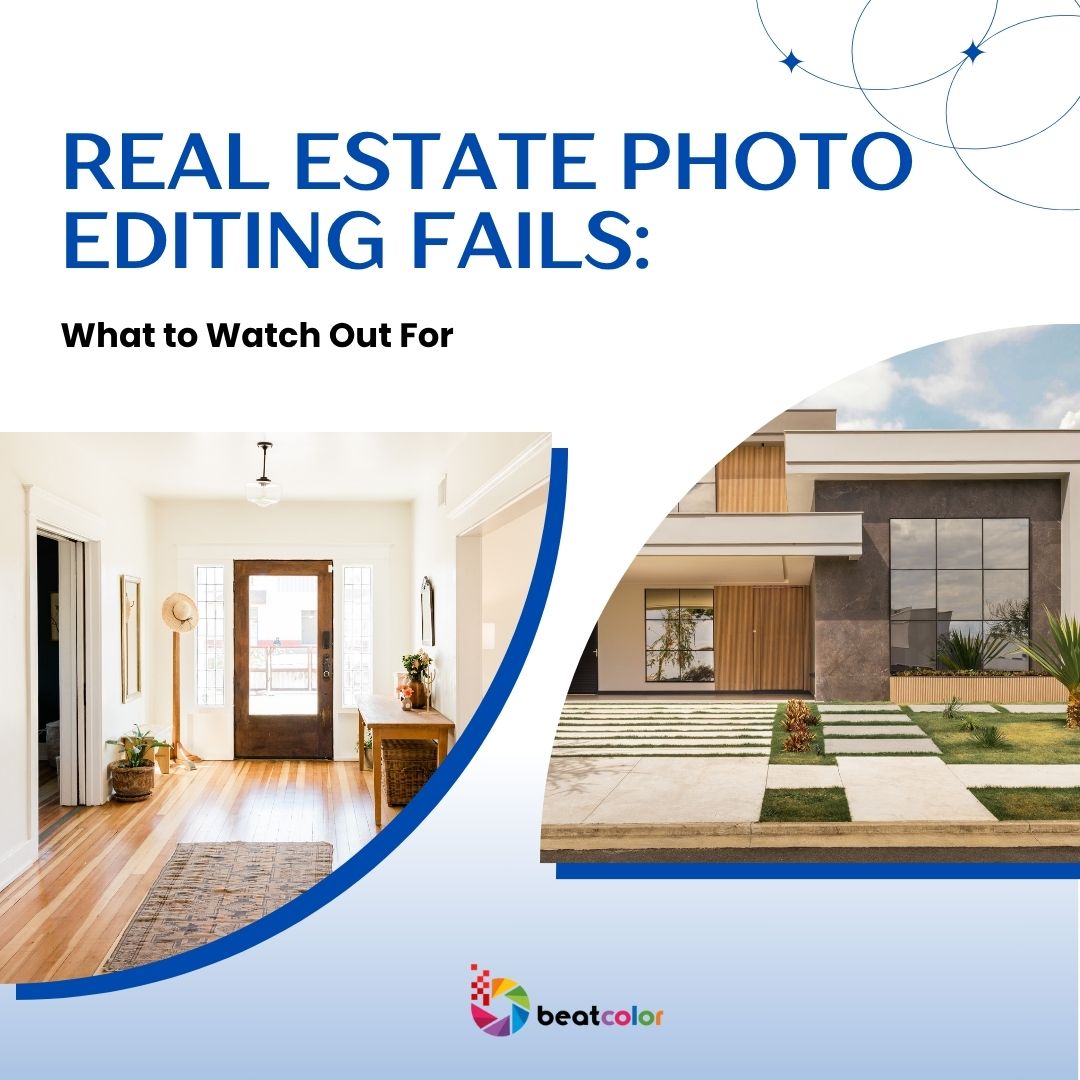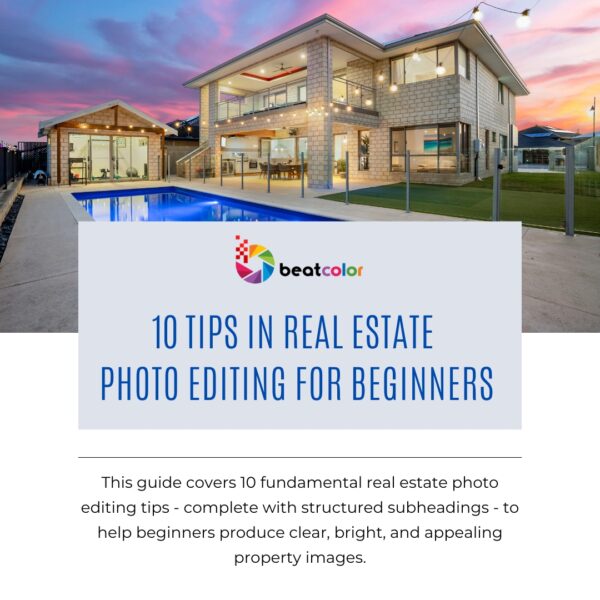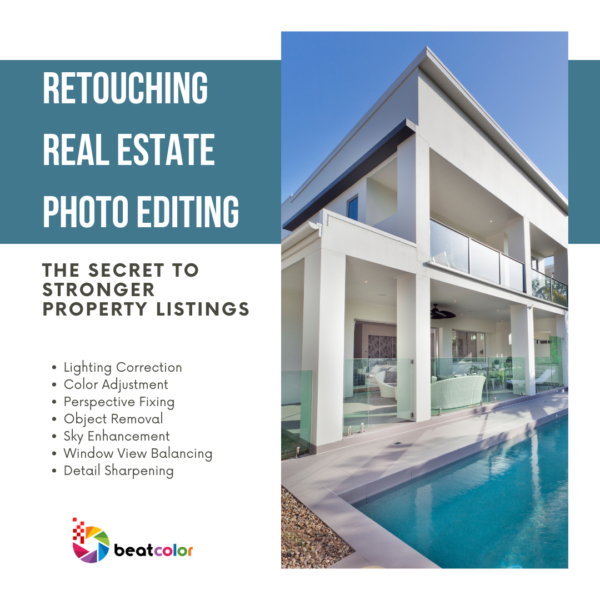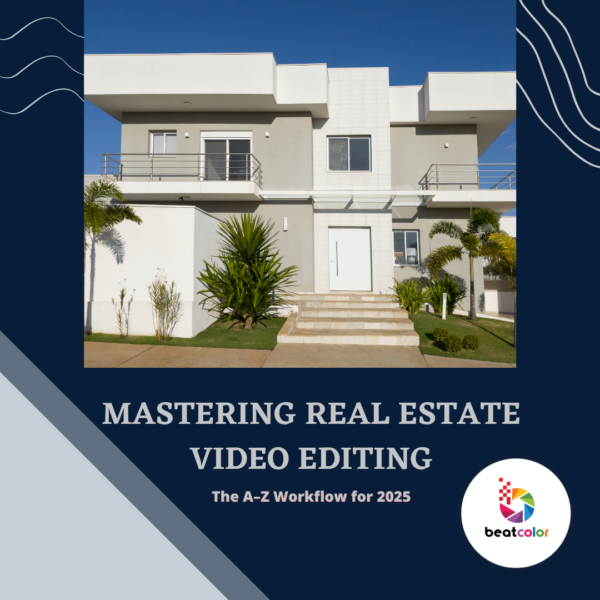Real Estate Photo Editing Fails: What to Watch Out For
Real estate photo editing plays a crucial role in today’s fast-paced property market, where photos are everything. With more than 98% of homebuyers using online listings (NAR 2024), real estate photography can make or break a sale. Yet, even the best photographers and editors make avoidable mistakes. These editing errors don’t just reduce image quality — they can turn off buyers or even break ethical guidelines.
Below, we outline 10 common real estate photo editing mistakes and share expert tips to help you avoid them.
1. Over-Editing Creates Unnatural Results
One of the most frequent mistakes in real estate photo editing is overdoing enhancements. This includes oversaturated colors, overly bright interiors, or perfectly blue skies that look fake. While it’s tempting to make every detail pop, too much editing can reduce trust and make listings look unrealistic.
How to avoid it:
Aim for natural-looking results. Use subtle adjustments in color, lighting, and clarity. Let the property speak for itself.
2. Inconsistent Lighting and Color Balance
Uneven lighting across photos can disrupt the viewer’s experience. One room may appear warm while another is cool-toned, creating inconsistency. This often happens when white balance is not adjusted or when using mixed light sources.
How to avoid it:
Make consistent use of color correction software and white balance settings. Editing software like Lightroom offers synchronized batch editing for efficiency.
3. Neglecting Perspective and Vertical Alignment
Photos with slanted walls or skewed perspectives can confuse buyers. They distort room proportions and give the impression of poor craftsmanship or tight spaces.
How to avoid it:
Utilize Photoshop or Lightroom’s lens correction or vertical correction tools. Shoot from a height of 5 feet for a balanced perspective.
4. Ignoring clutter or private objects in the picture
Buyers want to envision themselves in the space, not the current homeowner. Personal items like toiletries, toys, or pet accessories reduce appeal and make rooms feel messy.
How to avoid it:
Virtually declutter or remove distractions during editing. Replace them with neutral objects using digital staging if needed.
5. Misleading Window Views
Many editors replace window scenes with idealized views like oceanfronts or mountain landscapes. If the real view is a parking lot, this can lead to legal consequences and disappointed buyers.
How to avoid it:
Only enhance what is visible from the window. Adjust exposure and contrast to balance the brightness inside and outside without faking the view.
6. Using Blurry or Low-Resolution Images
High-resolution images are essential in 2025’s digital-first market. Blurry or pixelated images reflect poorly on both the listing and the brand.
How to avoid it:
Always use the right camera settings and shoot in RAW format. During editing, review at 100% zoom to catch any flaws or focus issues.
7. Excessive Use of Filters or Special Effects
While Instagram filters look great on selfies, they are not suitable for real estate. Heavy filters can distort natural lighting and color, making rooms appear unnatural or outdated.
How to avoid it:
Stick to clean, professional editing styles. Pay attention to clarity, contrast, and brightness rather than tricks.
8. Poor Exterior Enhancements
Many agents prioritize interior photos but forget that exterior shots form the first impression. Failing to enhance lawn color, sky brightness, or curb appeal can reduce buyer interest.
How to avoid it:
Use sky replacement to fix overcast skies. Enhance greens and clean surfaces like driveways and roofs using local adjustment tools.
9. Inaccurate Virtual Staging or Renovations
Virtual staging is a powerful marketing tool. However, when done poorly, it becomes obvious. Misplaced rugs, floating furniture, or unrealistic shadows signal amateur work.
How to avoid it:
Work with professional editors or services that understand scale, furniture placement, and interior design. Keep staging neutral and believable.
10. Violating Ethical Standards in Editing
Excessive editing or changing of a property’s features may cause legal issues or mistrust from buyers. Examples include removing power lines, fixing cracks, or editing out permanent flaws.
How to avoid it:
Follow the National Association of Realtors’ (NAR) guidelines on ethical image use. Be open about improvements and steer clear of deceptive adjustments.
Why Avoiding These Mistakes Matters in 2025
With the rise of AI tools like Luminar Neo, Topaz Labs, and Photoshop’s Generative Fill, editing has never been easier — or riskier. Automation can lead to uniform but inauthentic edits if not carefully reviewed.
Recent studies (Zillow, Q1 2025) show homes with accurately edited photos sold 32% faster than those with overly enhanced images. Buyers value transparency more than perfection. Accurate visuals build trust, and trust sells homes.
Additionally, many MLS platforms now flag listings with overly modified images. This means that over-editing doesn’t just affect buyer impressions — it can get your listing removed.
Quick Tips for Quality Real Estate Editing
- Shoot in RAW to preserve image quality
- Use a tripod for sharper photos and better framing
- Calibrate your monitor for true color correction
- Always compare before-and-after photos during editing
- Avoid adding elements not present during the shoot
- Consider outsourcing to professionals for consistent quality
Final Thoughts
Real estate photo editing blends creativity and precision to make every property shine. Done right, it attracts buyers, speeds up sales, and elevates your brand. Done poorly, it can drive buyers away or spark disputes.
By avoiding these 10 common mistakes, you’ll ensure your photos reflect the true value of the property. Stick to ethical practices, use editing tools wisely, and prioritize authenticity.
In 2025, honest presentation is the most powerful sales tool in your real estate marketing toolkit.
Read more:
Flambient Real Estate Photography: Investment Cost and Service Value
The Best Photo Editing Programs You Should Try in 2025
Camera Setting for Twilight Real Estate Photography: A Modern Photographer’s Guide











